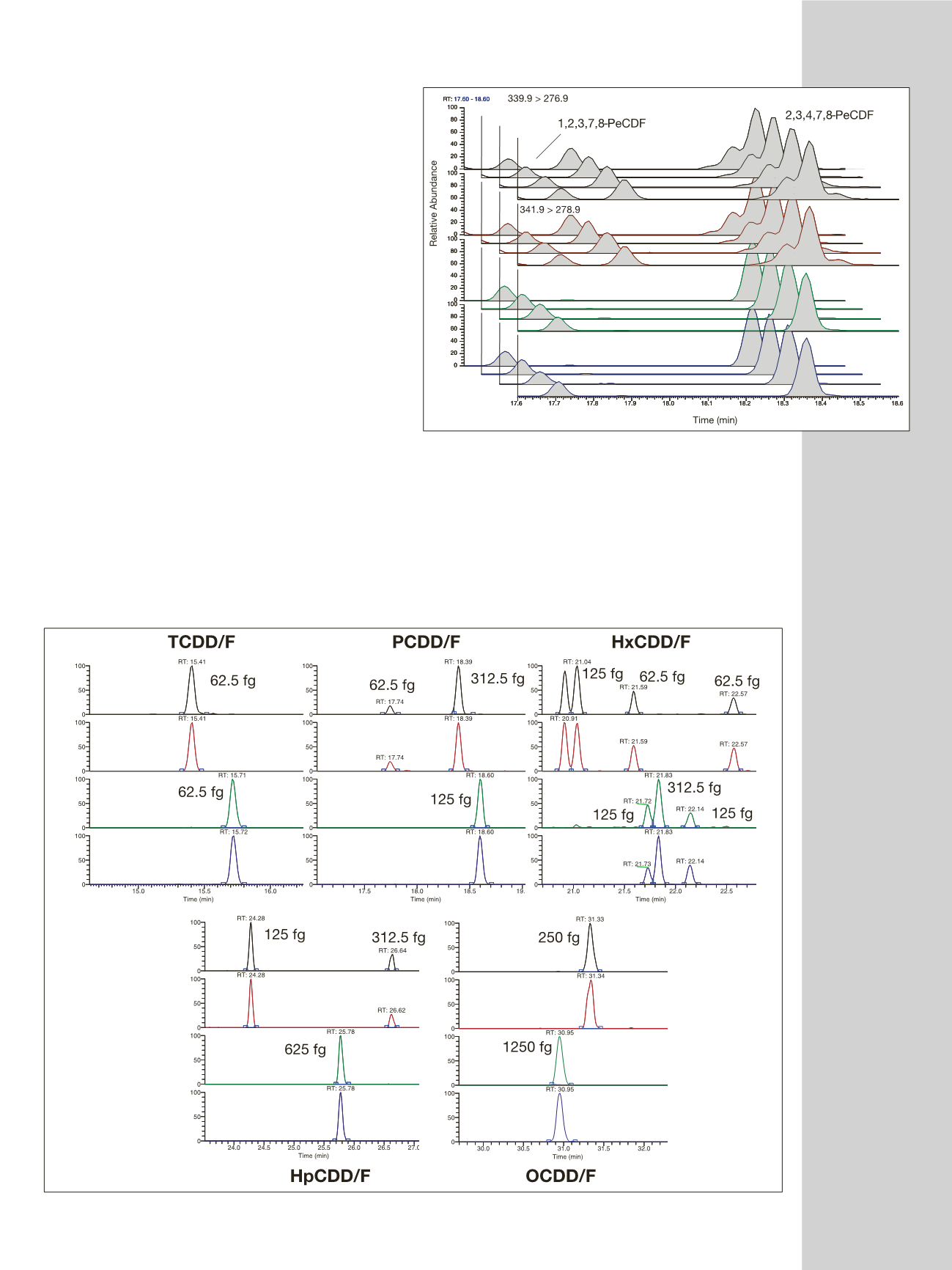
Ion Ratio Confirmation
Most frequently, during routine dioxins analysis using
HRMS, an ion ratio comparison of a detected congener
is performed against theoretically calculated values. If
the value obtained is within acceptable tolerance then the
peak has passed that part of the confirmation check. In
GC-MS/MS analysis, because of the nature of having two
stages of MS, the ion ratios differ from that of HRMS
but still form a predictable pattern in line with the isotopic
composition of precursor and product masses. This allows
high confidence in a strong pre-confirmation positive
detection. Figure 4 shows the theoretically calculated ion
ratios for SRM analysis of tetra thru octa PCDD/F
congeners as well as the measured values obtained from a
calibration sequence using the TSQ Quantum XLS Ultra.
The data obtained showed strong agreement, well within a
typical ±15% QC tolerance (comparable to QC tolerances
for GC/HRMS methods in EPA Method 1613 revision B).
Sample and QC Information
Another advantage of screening dioxins using GC-MS/MS
is that the isotope dilution quantification technique,
common in HRMS confirmatory analysis is retained. This
means that solid quantitative data can be achieved, with
real TEQ calculations, as well as a good understanding of
sample preparation efficiency through recovery information.
Table 5 gives recovery information for a set of food
samples screened using TSQ Quantum XLS Ultra. In
addition, congener provenance with profile information
remains with triple quadrupole screening, which can add
value to continuous monitoring data. This information is
lost in non-GC/MS based screening techniques.
Figure 4: SRM chromatograms of native PCDD/F congeners from the lowest calibration level for the analysis. On column injected amounts are given for each
congener. Dibenzofurans can been observed in the top two traces for each congener group and dibenzodioxins in the bottom two.
Figure 3: Overlay of 1,2,3,7,8-PeCDF (0.4 ng/kg 88% dry weight) and
2,3,4,7,8-PeCDF (3.4 ng/kg 88% dry weight) for four injections of grass
meal sample


